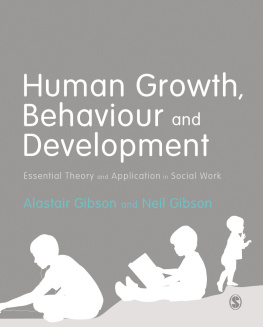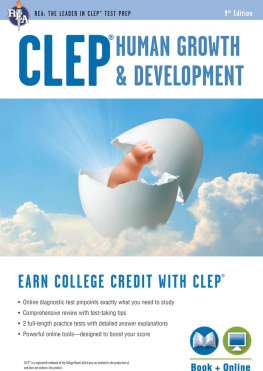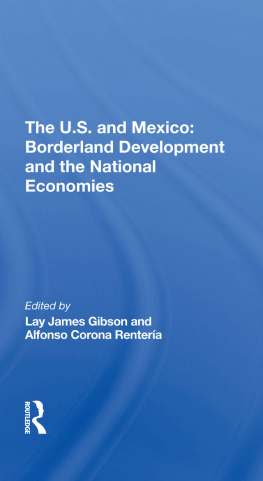SAGE Publications Ltd
1 Olivers Yard
55 City Road
London EC1Y 1SP
SAGE Publications Inc.
2455 Teller Road
Thousand Oaks, California 91320
SAGE Publications India Pvt Ltd
B 1/I 1 Mohan Cooperative Industrial Area
Mathura Road
New Delhi 110 044
SAGE Publications Asia-Pacific Pte Ltd
3 Church Street
#10-04 Samsung Hub
Singapore 049483
Alastair Gibson and Neil Gibson 2016
First published 2016
Apart from any fair dealing for the purposes of research or private study, or criticism or review, as permitted under the Copyright, Designs and Patents Act, 1988, this publication may be reproduced, stored or transmitted in any form, or by any means, only with the prior permission in writing of the publishers, or in the case of reprographic reproduction, in accordance with the terms of licences issued by the Copyright Licensing Agency. Enquiries concerning reproduction outside those terms should be sent to the publishers.
Library of Congress Control Number: 2015935203
British Library Cataloguing in Publication data
A catalogue record for this book is available from the British Library
ISBN 978-1-4739-1273-1
ISBN 978-1-4739-1274-8 (pbk)
Editor: Kate Wharton
Production editor: Katie Forsythe
Copyeditor: Roza I. M. El-Eini
Proofreader: Philippa Emler
Marketing manager: Tamara Navaratnam
Cover design: Lisa Harper-Wells
Typeset by: C&M Digitals (P) Ltd, Chennai, India
Printed and bound in Great Britain by Ashford Colour Press Ltd
About the authors
Alastair Gibsongraduated with an MA in History before becoming frustrated as a hospital administrator and deciding to move into the more challenging and rewarding practice of social work. He worked in Aberdeen and Gateshead in a variety of health care social work settings and then taught at Robert Gordon University (RGU). Developing his enthusiasm for interprofessional practice, he was a founder member of the Centre for the Advancement of Interprofessional Education (CAIPE) and helped develop shared training for social work, health, education and police trainees. He has thoroughly enjoyed teaching Human Growth and Behaviour as well as being Course Leader of the BA (Hons) Social Work by Distance Learning before retiring in 2009. He is now an independent practice teacher.Neil Gibsongraduated with a BA in Communication and worked in the media, travel and tourism before re-entering education and obtaining an MSc in Social Work. He has worked in residential childcare, substance use, care management and adult protection before joining the social work teaching team at Robert Gordon University where he currently works.
Acknowledgements
I would like to thank Joyce Lishman for her support and companionship in furthering my knowledge of psychosocial theory. In addition, thanks to the many students whose motivation and desire to learn have been a further inspiration. Finally, thanks to Maureen for tolerating my antisocial fixation on a computer screen for the past year and to Coen for keeping me active and entertained.
Alastair Gibson
Thanks to the students who have crossed my path when teaching Human Growth and Behaviour for making me think about the best way to describe these complex theories. Thanks to Ian Jeffries for reading and critiquing sample chapters, and thanks to Kirsi and Coen for all the support.
Neil Gibson
We would both like to thank Kate Wharton, Katie Norton and Katie Forsythe at Sage for their encouragement and enthusiastic support.
Introduction
In this book, we are hoping that you will find a clear explanation of the main theories which are delivered on social work courses under the headings of human growth and behaviour or human growth and development. These theories are psychodynamic and psychosocial, which means that they address the conscious and unconscious parts of an individuals personality, but also address the individuals relationships with other people. Experience has taught us that the understanding of individuals is a complex matter, and that there is no simple, straightforward approach which provides an easy answer. To apply social work interventions without making a holistic assessment of personality may result in negative outcomes for the service user and a sense of failure or frustration for the worker. The theories that we address in this book reflect this complexity, and we shall try to make them as clear as possible in the written word.
With greater understanding of the theories, you will hopefully develop more confidence in incorporating them into your practice. One of the potential dangers is that social workers apply these theoretical approaches mechanistically, as if one size fits all, whereas the message we wish to convey is that of understanding the uniqueness of each individual with whom you may work. Therefore, in addition to providing an explanation of theories, we also intend to demonstrate how these theories can be applied to social work or social care practice by providing case examples.
We understand that you may wish to skip over this Introduction to get to the actual content, but please read on for a few more minutes in order to find out how best to use the book.
First, we are going to concentrate on the psychosocial: we are not going to go into psychological or sociological theories in any depth, but we shall direct you to further reading throughout. Second, we are going to attempt to show you how theories overlap and complement one another: in assessing peoples needs, you are putting together a jigsaw and these various theories are your jigsaw pieces. Third, we hope to show you that, while these theories provide broad knowledge and understanding, the individuals unique set of experiences determine how these theories can be applied, and it is fundamentally important that we apply theory to the individuals circumstances and do not try to fit the individual to the theory.
You will find the book arranged in four parts. , we draw parallels between these three key themes, which we see as the basic psychosocial toolkit for practice.
develops the Object Relations theoretical approach by considering how personality development from childhood may affect our capacity to form positive adult-to-adult and adult-to-child relationships. While our primary aim is to help you better understand these key theories, we shall be acknowledging their contexts within a sociological and environmental perspective and shall direct you to further reading on these areas.
considers to what extent issues from childhood which impacted on young adulthood can be strengthened at this point in life or whether they limit an individuals capacity to develop emotional maturity. Object Relations Theory provides insights into themes of dependence, interdependence and rejection, which are very relevant to this stage of life.


















